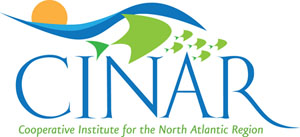Analysis
It is not news that fish stocks are much diminished in the Gulf of Maine. But a new report on the fisheries history of Stellwagen Bank provides insights into the complex interaction of humans and the marine ecosystem that has contributed to this decline.
The report illuminates the ecological, cultural, economic and political factors that have contributed to patterns of fishing on Stellwagen Bank—and the Gulf of Maine more generally. It makes clear that overharvesting is more complicated than the old saw of “too many boats chasing too few fish” might indicate.
The report, a social and ecological history of Stellwagen Bank, was researched and written by a team, lead by Stefan H. Claesson of the University of New Hampshire’s Gulf of Maine Cod Project. The effort began with the search for records describing the Bank’s marine resources including explorers’ accounts, fishing logbooks, census records, newspapers and scientific survey data.
Analysis of the data collected allowed the researchers to characterize changes in Stellwagen stocks over time and compare stock levels in the past to those of today as well as to the Gulf of Maine as a whole. The authors find that annual catch levels on Stellwagen Bank have declined by 50 percent during the past hundred years.
The report sheds light on the question of the appropriate goals for habitat and fish stock restoration on Stellwagen Bank. Daniel Pauly, a researcher at the University of British Columbia, coined the term “sliding baseline” to describe the tendency of every generation to define targets for restoration in relation to their memory of stock levels. As a result, as generations pass, the standard for what represents an acceptable level of fish stocks declines. The analysis of the new report helps put our understanding of fish stocks in historical perspective.
While we may think that concern over overharvesting of fish stocks is a relatively modern phenomenon, the report makes clear that calls for action to address declining landings go way back. Congress established the US Commission of Fish and Fisheries to investigate the decrease in fish populations in 1871—well before the development of the otter trawls, diesel engines, or electronic fish finders we currently associate with overharvesting.
It is well known that early explorers to the Gulf of Maine described an almost unimaginable abundance of fish. Less clear is just how quickly the region’s fishermen began to make a dent in those stocks. As early as 1651, the waters off Boston experienced a shortage of cod, most likely the result of the construction of weirs and dams. Populations of fish found near to shore, once prodigious and now virtually nonexistent in the Gulf of Maine, were “significantly deteriorated” by 1800.
Fishing in Massachusetts’ inshore waters “appears to have peaked in 1832.” The trend in fishing became one of going further from shore, to the offshore banks of the Gulf of Maine and well beyond, to find fish in sufficient quantities to support commercial exploitation. The industry supplemented its travels with improvements in fishing capacity—a process that accelerated at the end of the 19th century and well into the twentieth.
Hand lines were replaced by long lines, sails by steam power. Gill nets were introduced along with the beam trawl, which was soon supplanted by the otter trawl.
Fishing activity in the Gulf of Maine was very much affected by what was going on ashore. Wars, government mandates, economic forces, cultural trends, and technological developments had major effects on fishing practices over the years. Ninety percent of the fishing fleet in Salem, Massachusetts, was lost in King William’s War (1689-1697)—the town would never compete as a leading fishing port again.
Portland, Maine, grew in importance to the fishing industry as improvements in rail and steam provided connections to markets. But that city and the fishing fleets that relied on salting to preserve their catch, lost out as the demand for fresh fish took off at the end of the nineteenth century. The development of refrigeration and flash freezing further consolidated the hold of major ports such as Gloucester and Boston on the fishing industry.
The researchers looked at several characteristics of Stellwagen’s fish stocks. One indicator of fish stock health relates to the complexity of the food web of which fish are a part. Pauly and others looking at global trends in the effect of fishing on marine ecosystems have identified structural changes in fish stocks subject to overharvesting: the food web is flattened as top predators are dramatically reduced in numbers.
As fish at the top of the food chain are removed, fishing targets those species at the next level down in the food web—and so on. The process is known as “fishing down the food chain” and is evident on Stellwagen Bank. Halibut and swordfish, top predators in Stellwagen Bank’s ecosystem, were “overfished to near extirpation in the late 19th and early 20th centuries.” The report notes that landings throughout the Gulf of Maine have shifted over time toward species lower on the food web.
The relative abundance of different species is also catalogued in the report. The researchers note shifts in landings of cod and haddock over time: haddock dominated landings in the early 20th century but cod landings have dominated in the modern era. The authors point out that many factors affect landings and that it is simplistic to think that the trends represent a collapse of haddock stocks and/or a restoration of cod stocks.
For example, haddock landings may have dropped not just because abundance dropped but because market preferences shifted from haddock to cod. Comparing Stellwagen data to other parts of the Gulf, the authors also find that the landings patterns suggest that cod and haddock populations in the Gulf of Maine are comprised of sub-stocks, showing similar effects of overharvesting but on differing time tables.
Claesson and his colleagues have provided a detailed and fascinating analysis of the ecological history of Stellwagen Bank. Their work puts today’s fisheries debate in historical context and suggests that fishing is a complex social phenomenon.
Links:
Stellwagen Bank Marine Historical Ecology Final Report:
http://stellwagen.noaa.gov/library/pdfs/sbnms_mhe_report.pdf
Gulf of Maine Cod Project:
http://fishhistory.org/



















